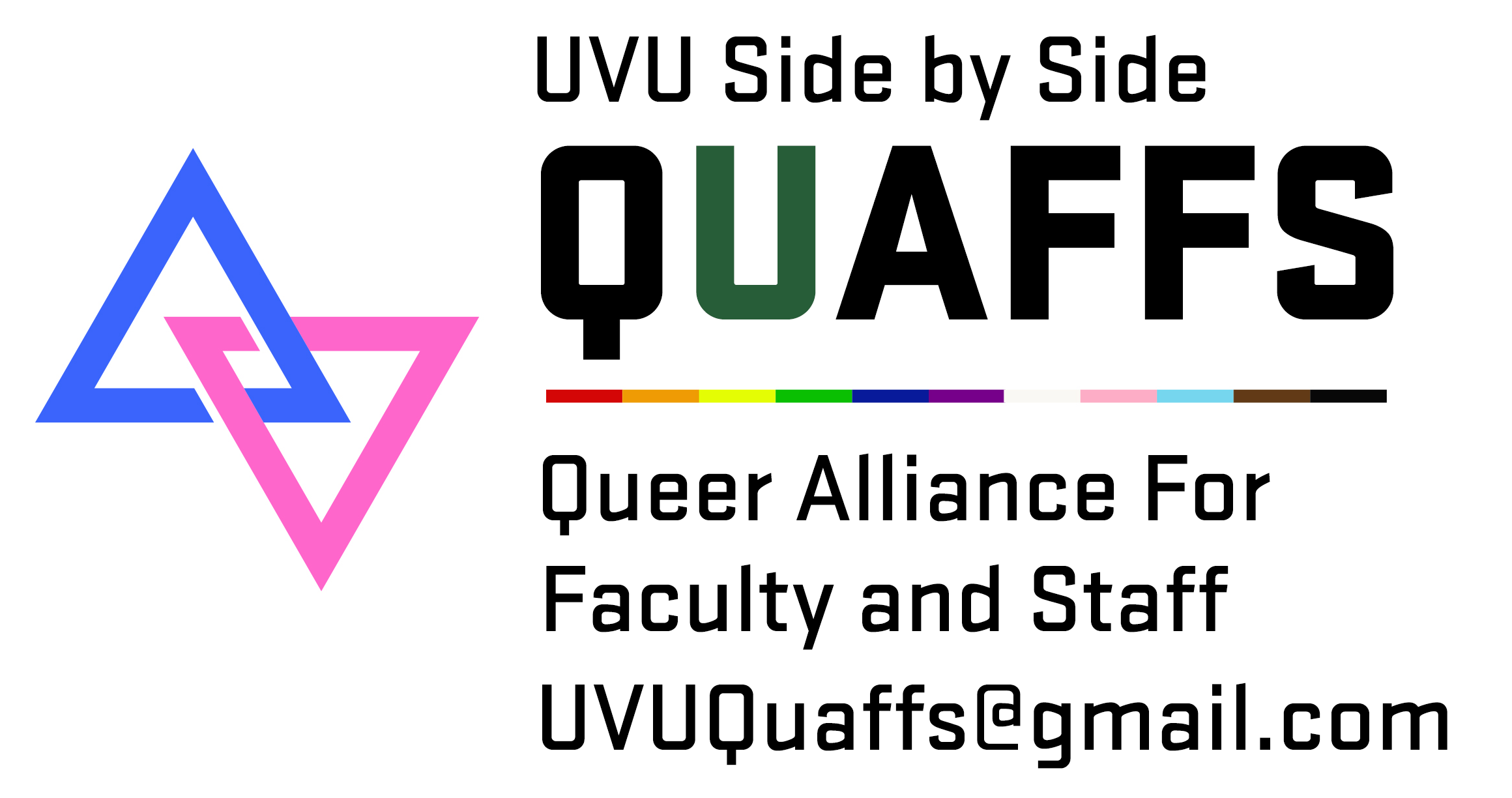LGBTQAI+ Statistics and Considerations: Sexual Assault and Domestic Violence

LGBTQAI+ Related Statistics and Considerations: sexual assault and Domestic Violence
[Go back to full LGBTQIA+ statistics and considerations list in educational resources tab]
Because the majority of the sexual assault and domestic violence awareness movement has focused on heterosexual relationships, members of the LGBTQ+ community have been largely left out of the movement. However, recent research shows that LGBTQ+ members fall victim to domestic violence at equal or even higher rates compared to their heterosexual counterparts.
Situation: Sexual assault is higher against LGBTQAI+ populations nationwide and in Utah.
Evidence: According to the Human Rights Campaign (HRC), LGBTQ+ people experience higher rates of sexual assault than straight people across the board, with bisexual and transgender individuals experiencing some of the highest rates of sexual violence. As Utah Public Radio reports, “A new Utah Department of Health survey has found that lesbian, gay and bisexual Utah residents are more frequently victims of sexual violence than heterosexual people. The Salt Lake Tribune reports that 10,000 Utah adults took the survey in 2016, answering questions such as whether they had ever been raped or if someone had ever attempted to rape them. One in 10 adults in the state — both men and women — said they have experienced sexual violence at least once. The rate was considerably higher for woman, with one in six saying they have experienced sexual violence. Close to half of bisexual people and a third of lesbian or gay people surveyed reported experiencing sexual violence at some time in their life, compared to less than 9 percent for those who identify as straight.
Considerations and Efforts to Address the Issues: The Utah Coalition Against Sexual Assault (UCASA) created a new statewide LGBTQIA+ Coordinating Council to ensure that LGBTQIA+ survivors of and victims of sexual violence, as well as the broader LGBTQIA+ community, are represented in victim services organizations, institutions, and partnerships that serve sexual violence survivors statewide.
Situation: Domestic violence is higher against LGBTQIA+ populations
Evidence: According to the National Coalition Against Domestic Violence (Johns Hopkins Medicine, n.d.) and the Centers for Disease Control (2013), 43.8% of lesbian women and 61.1% of bisexual women have experienced rape, physical violence, and/or stalking by an intimate partner at some point in their lifetime, as opposed to 35% of heterosexual women. Transgender victims are more likely to experience intimate partner violence in public, compared to those who do not identify as transgender. Bisexual victims are more likely to experience sexual violence, compared to people who do not identify as bisexual.
Types of Domestic Violence Affecting the LGBTQAI+ Community as described by the Harmony House:
- 20% of victims have experienced some form of physical violence;
- 16% have been victims to threats and intimidation;
- 15% have been verbally harassed;
- 4% of survivors have experienced sexual violence;
- 11% of intimate violence cases reported in the NCADVP’s 2015 report involved a weapon.
Considerations and Efforts to Address the Issues: Education is needed and protections put in place.
References:
- Centers for Disease Control. (2013). CDC releases data on interpersonal and sexual violence by sexual orientation. https://archive.cdc.gov/www_cdc_gov/media/releases/2013/p0125_NISVS.html
- Harmony House (n.d.). Harmony House LGBTQ+ Survivors Domestic Violence and the LGBTQ Community. https://www.myharmonyhouse.org/how-we-help/survivor-resources/lgbtq/
- Human Rights Campaign (2022). Understanding Intimate Partner Violence in the LGBTQ+ Community. https://www.hrc.org/resources/understanding-intimate-partner-violence-in-the-lgbtq-community
- Johns Hopkins Medicine (n.d.). Lesbian and Bisexual Women's Health Issues. https://www.hopkinsmedicine.org/health/wellness-and-prevention/lesbian-and-bisexual-womens-health-issues#:
- Utah Public Radio (2018). Survey: LGBTQ People More Likely To Face Sexual Violence. https://www.upr.org/utah-news/2018-04-12/survey-lgbtq-people-more-likely-to-face-sexual-violence
[Go back to full LGBTQIA+ statistics and considerations list in educational resources tab]
